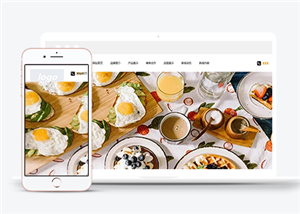Introduction:
What is the future development trend of the catering industry? What is the most profitable in the catering industry? How to build a management system for the catering industry? How does the catering industry conduct brand marketing? How much does it cost to develop mini programs in the catering industry?
People take food as their heaven, people are iron, rice is steel, and they are hungry if they don't eat a meal... From these ancient sayings, it is not difficult to see the importance of food to people. Nowadays, with the improvement of consumer demand and the further advancement of the Internet industrialization trend, with the central kitchen as the main body, diversification, small portion, and specialization have begun to become the new guiding direction for the development of the catering industry.
Take home dishes as the core, and small bowl dishes with local flavors are the representative of them. According to statistics, as of now, there are more than 10,000 small bowl dish merchants across the country, with an average monthly income of 30w+ and a net profit of 15w+, and the growth momentum is stable, leading the catering industry.

This is inseparable from the characteristics of small bowl dishes. Compared with traditional dishes, small bowl dishes have fewer portions and lower prices. Users can enjoy more dishes at the same cost, which improves the dining experience. At the same time, due to the fast pace of work, many professionals do not have enough time to eat out, and the quality and variety of meals in the staff canteens are generally at a low level. Here, the small bowl of dishes that happened to be the pain point was quickly recognized by a large number of users.
However, with the increase in commissions on take-out platforms such as Meituan and Ele.me, even small servings of high-profit and high-traffic dishes are also in a big dilemma. Customizing their own personal mini programs to convert platform traffic into private domain traffic has become a means for many catering industry businesses such as small bowls to solve the above problems.
In addition to avoiding excessive commissions, the use of personal customized mini programs is also conducive to customer retention. Taking product prices as an example, small servings merchants can use the portion of the platform commission as a discount to give customers benefits, realize mutual benefit and win-win results between themselves and them, and improve customer experience.

How Does POS System Work in Catering Industry?
What is a POS System?
A POS, or point-of-sale system, combines appointment scheduling system hardware, free appointment scheduling software, and services to process transactions. Simply put, it's what's used to collect money and a free booking app used by the consumers.
We associate POS systems with cash registers and complicated electronic systems. You give the customer an invoice, they pay, and it’s done. Well, not quite.
POS system in catering businesses, namely point-of-sales system for restaurants follows the same function as a traditional POS system in terms of how it’s designed to process transactions. However, it differs in its use. From making booking online, to tracking inventory, businesses can manage their entire operations with a restaurant POS system.
So What Exactly is a Restaurant POS System?
A restaurant POS system is a POS system with features tailored specifically to fit the needs of a restaurant’s operations. The system can manage:
1. Online Appointments
2. Offline Orders
3. Order Management
4. Inventory Management
5. Reporting
6. Analytics
7. Loyalty Programs
And More
KEY TAKEAWAYS:
1. A restaurant POS system combines traditional POS system hardware and software with additional features needed for restaurant operations.
2. Restaurant POS systems offer industry-specific features and benefits that retail POS systems do not.
3. Restaurant POS systems can streamline a business’s internal operations.
How Does it Work?
The system is designed with a restaurant’s operations in mind. The process will depend on the POS device implemented, but typically customers complete a series of steps to schedule appointments and achieve a successful purchase using a point-of-sales system. Most of the time, it works like this:
1. Customer makes an appointment online: Customers can make free booking online via store website, or mini-programs
2. Customer arrives at store and enjoys the service: When the customer arrive at store, they will start their order
3. The POS system calculates the price consumed: Once order is taken, the system will store and begin to calculate the invoice.
4. Kitchen Pret: Next, the system will streamline communication between the waitstaff and the kitchen.
5. Inventory Management: As orders are being made the POS system will track inventory making it easy for waitstaff and the kitchen to let customers know when items are no longer available. In addition to making ordering needed supplies easy.
6. Customer pays: The system will have already calculated the price, and the transaction can be completed.
7. The transaction is completed and payment collected.
Functionality
So, it can be seen that the functionality of a restaurant POS system allows orders to be tracked and added as the customer and wait staff see fit.
Sales & Ordering
A restaurant POS system can track sales and orders on one system. The waitstaff or the customer can input their order. Meanwhile, the POS system calculates the bill and keeps track of additional transactions. Once ready to pay, the waitstaff or customer can complete the transaction using credit, debit, or card.
Track Inventory
Gone are the days of needing to keep track of inventory on a piece of paper. Instead, the POS system keeps track of inventory as orders are completed. Each ingredient used in each dish is tracked accordingly and as supplies lower, items are removed from the menu.
Manage Your Team
POS systems can track employee performance and when they are working. The system can track how long each waitstaff member takes on orders or even how long the kitchen takes. It helps you gain beneficial insight into your team to help them improve. In addition, you can track busy hours and shift schedules accurately.
Reporting
Sales, orders, inventory, waitstaff performance, and more can all have data reports using a restaurant POS system.
1. Hourly and weekly sales reports
2. Low inventory reports
3. Menu item performance
4. Hourly and weekly sales reports